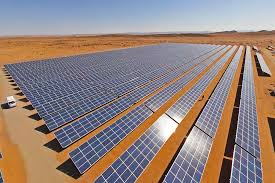As the world is moving towards cleaner and greener energy sources, Solar cells or Solar Cells have become one of the most popular choices. Solar Cells are devices that convert sunlight into electricity, and they are widely used in homes and businesses to reduce electricity bills and carbon footprints. However, the effectiveness and cost-efficiency of Solar Cells vary from model to model, and it is important to evaluate the Price-Performance Ratio of Solar cells before investing in them. In this blog post, we will cover everything you need to know about Evaluating the Price-Performance Ratio of Solar cells.
1. Understand the Efficiency of Solar cells: The efficiency of Solar Cells defines how much sunlight they can convert into electricity and is a vital factor in evaluating their Performance Ratio. High-efficiency Solar Cells can absorb more sunlight and generate more electricity, making them more cost-efficient in the long run. Generally, the efficiency of Solar Cells ranges from 15% to 22%, and you should choose a model with an efficiency score closer to 22% for better results.
2. Assess the Durability of Solar cells: Since price solar cells (pris solceller) are installed outside and exposed to the elements, it is crucial to evaluate their durability. More durable Solar Cells can withstand harsh weather conditions and last longer, making them a better investment in terms of the Price-Performance Ratio. Look for models with higher ratings for temperature tolerances, impact resistance, and water ingress protection.
3. Compare Prices and Features of Solar cells: Solar Cells come in different price ranges, and it is essential to compare prices and features of different models to choose the best one for your needs. When comparing prices, consider the efficiency and durability factors mentioned above and check for additional features, such as warranties, certifications, and power output. A higher-priced Solar Cell with more features and better durability may be a better investment in the long run.
4. Evaluate the Installation and Maintenance Costs of Solar cells: Apart from the initial investment in Solar Cells, you need to consider the installation and maintenance costs too. Installing Solar Cells requires professional expertise and equipment, and you have to factor in those expenses too. Similarly, maintenance costs may include cleaning the panels, replacing faulty parts, and servicing every few years. Make sure to consider these costs and compare them with the expected electricity savings to evaluate the Price-Performance Ratio of Solar cells.
5. Look for Government Rebates and Incentives: Solar Energy is a popular choice for governments worldwide, and many offer rebates and incentives for installing Solar Cells. Check if your government offers any such schemes and factor them in while evaluating the Price-Performance Ratio of Solar Cells. Rebates and incentives can significantly reduce the initial investment and reap higher returns in the long run.
Conclusion:
In summary, Evaluating the Price-Performance Ratio of Solar cells is a crucial step in investing in Solar Energy. Understanding the efficiency, durability, features, installation, and maintenance costs, and government rebates all contribute to making an informed decision. It is also important to consider the size of the installation, the location, and the expected electricity usage before choosing a Solar Cell model. Investing in the right Solar Cell model with better Price-Performance Ratio can not only save money but also contribute to a cleaner and greener environment.


